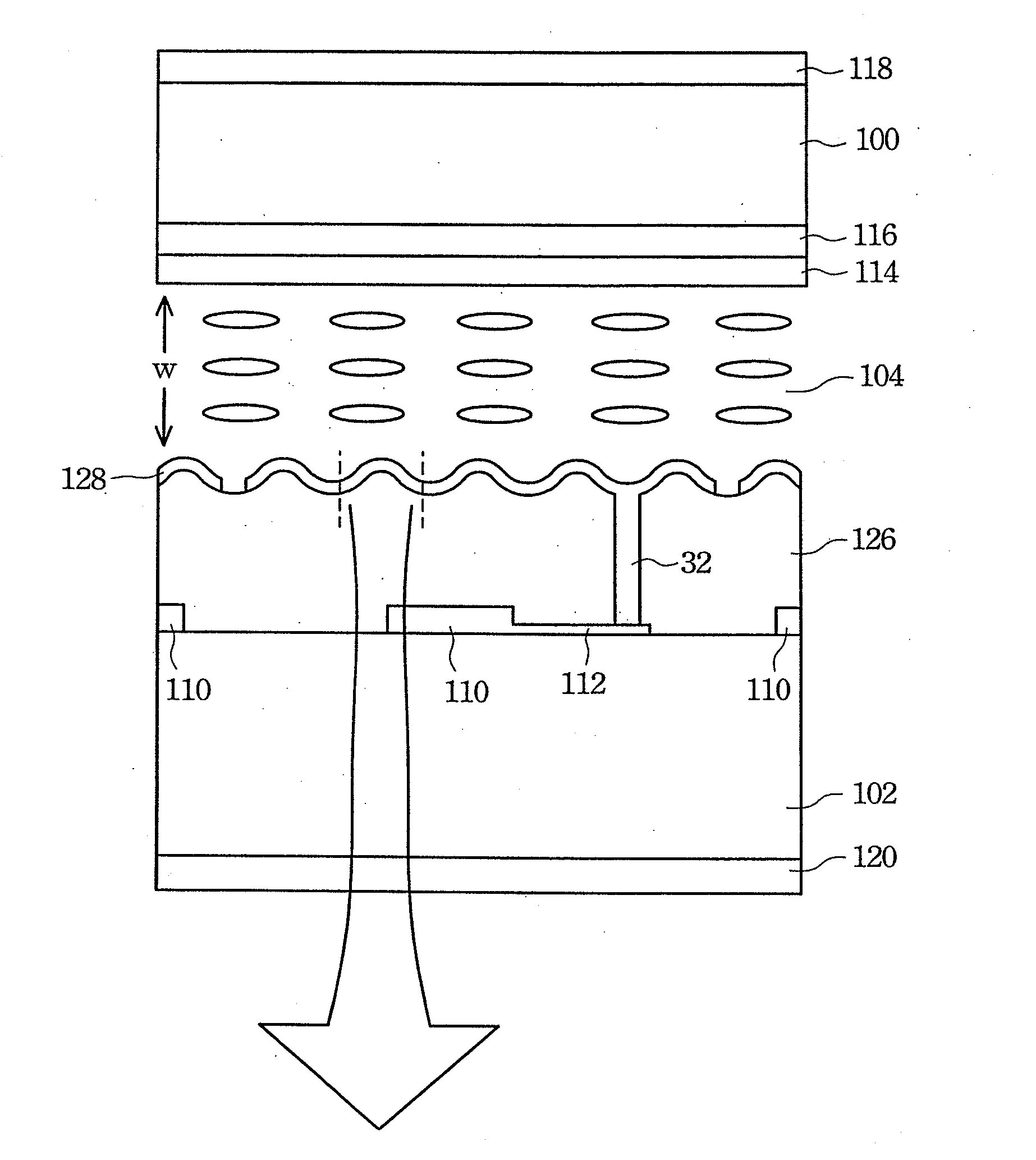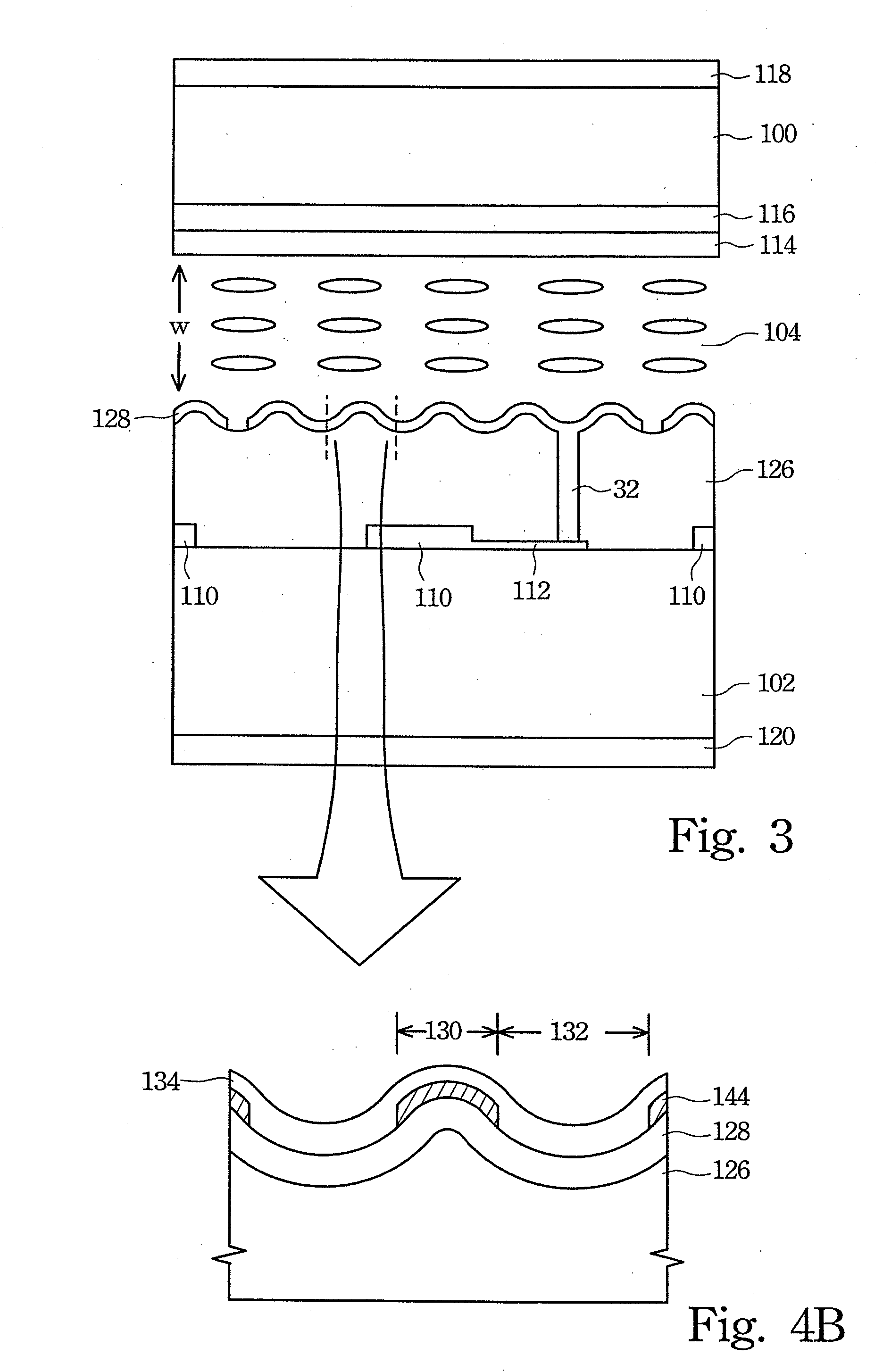Method for forming different liquid crystal twist angle
a liquid crystal display and twist angle technology, applied in non-linear optics, instruments, optics, etc., can solve the problems of increasing the power consumption of backlight and consuming a large portion of the total power consumed by the liquid crystal display device, and achieve different luminescence efficiencies and maximize the total luminance
- Summary
- Abstract
- Description
- Claims
- Application Information
AI Technical Summary
Benefits of technology
Problems solved by technology
Method used
Image
Examples
first embodiment
[0027] The rubbing method is used to arrange the orientation in the The rubbing process adjusts and determines the orientation of the orientation layer that may arrange the liquid crystal molecules according to the determined orientation. The present invention uses different rubbing pressures to adjust and determine the orientation of the reflection region 130 and transmission region 132, as shown in FIG. 4. For example, because the transmission region 132 is located in the recess of the concave and convex structure, the higher rubbing pressure is used to adjust and determine the orientation of this region. The orientation is adjusted and determined in the reflection region 130 and the transmission region 132 at the same time due to the higher rubbing pressure.
[0028] Conversely, because the reflection region 130 is located in the convex portion of the concave and convex structure, the lower rubbing pressure is used to adjust and determine the orientation of this region. The transmi...
second embodiment
[0032] the present invention uses the UV alignment method. The method uses UV light having an identical polarized direction to arrange the respective orientations of the orientation layers formed over the reflection region 130 and transmission region 132.
[0033] Referring to FIG. 7A, the orientation of the reflection region 130 is first arranged. The UV light 142A having an identical polarized direction as required orientation on the reflection region 130 is used to arrange the orientation of the orientation layer 134. Because the UV light illuminates the whole orientation layer 134, the transmission region 132 and the reflection region 130 have the same arranged orientation.
[0034] Referring to FIG. 7B, the orientation of the transmission region 132 is arranged next. The UV light 142B having an identical polarized direction as the required orientation on the transmission region 132 is used from the back to illuminate the orientation layer 134 to arrange the orientation. Although the...
PUM
| Property | Measurement | Unit |
|---|---|---|
| twist angle | aaaaa | aaaaa |
| twist angle | aaaaa | aaaaa |
| twist angle | aaaaa | aaaaa |
Abstract
Description
Claims
Application Information
 Login to View More
Login to View More - R&D
- Intellectual Property
- Life Sciences
- Materials
- Tech Scout
- Unparalleled Data Quality
- Higher Quality Content
- 60% Fewer Hallucinations
Browse by: Latest US Patents, China's latest patents, Technical Efficacy Thesaurus, Application Domain, Technology Topic, Popular Technical Reports.
© 2025 PatSnap. All rights reserved.Legal|Privacy policy|Modern Slavery Act Transparency Statement|Sitemap|About US| Contact US: help@patsnap.com



